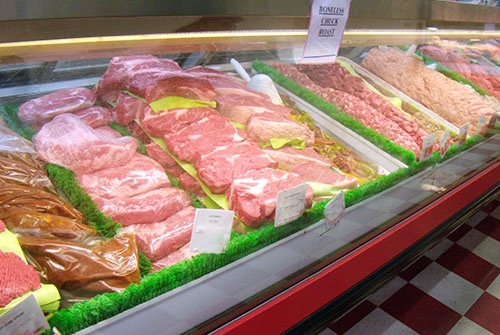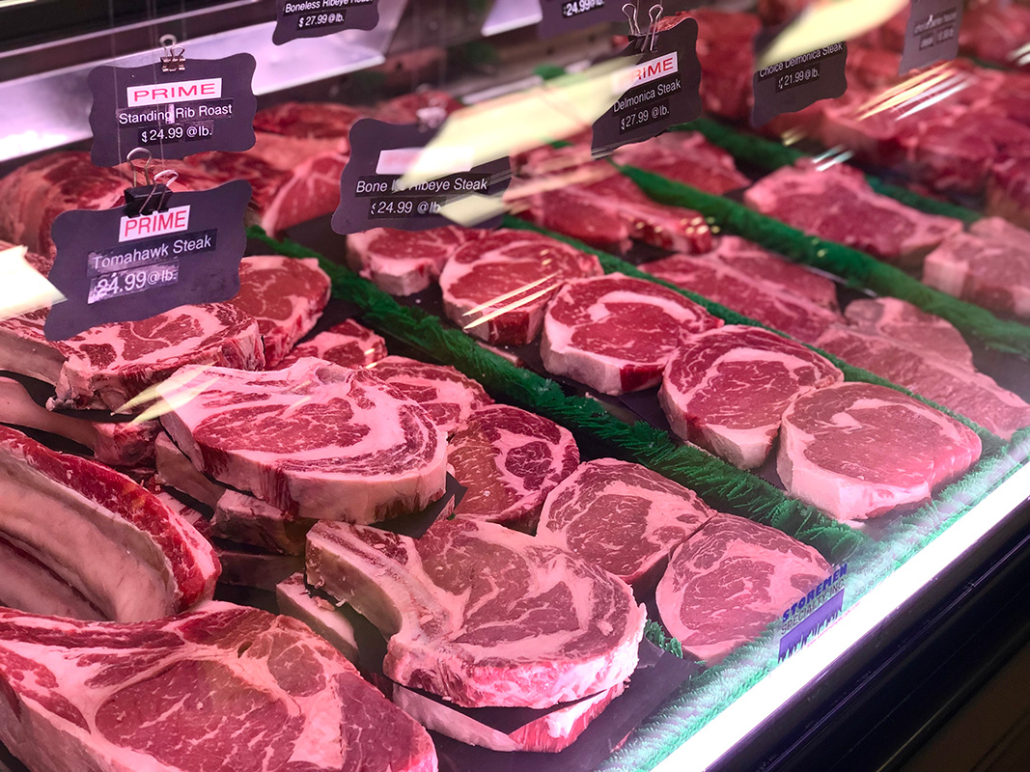Discover Fresh Cuts at Bagley Farms Meat Market Edwardsville IL for Your Next barbeque
Discover Fresh Cuts at Bagley Farms Meat Market Edwardsville IL for Your Next barbeque
Blog Article
Discover the Art of the Butcher's Cut in a Modern Meat Market
In the ever-evolving landscape of modern-day meat markets, the butcher's cut has transcended its traditional origins, merging old-time craftsmanship with modern practices. What absolutely sets the modern-day butcher apart is their capability to forge a much deeper connection in between consumers and the origins of their meat.
Advancement of Butchery Methods

The mid-20th century saw butchery techniques better refined by clinical understandings into muscular tissue biology and meat aging, improving both inflammation and preference. Advancements like vacuum cleaner packaging and refrigeration extended item shelf-life, permitting butchers to branch out offerings and enhance high quality control. This period additionally noted the increase of specialized tools, such as band saws and meat slicers, which raised precision and efficiency in meat handling.
The 21st century has actually presented digital technology right into the butchery realm. Computerized systems currently assist in tracking animal provenance and maximizing cuts to satisfy certain consumer choices. Furthermore, a rebirth in artisanal butchery has actually arised, mixing traditional skills with modern understanding to deal with customers looking for honest and sustainable meat choices. This development emphasizes a vibrant interaction in between practice and innovation, meeting contemporary needs while protecting the craft's heritage.

Comprehending Meat Cuts

Comprehending the ins and outs of meat cuts is essential for both butchers and consumers seeking high quality and worth. Each cut originates from a different component of the pet, presenting one-of-a-kind flavors, textures, and cooking methods. Proficiency of these distinctions not just boosts cooking experiences yet additionally makes the most of the utility of each carcass. For butchers, specific cuts show skill and regard for the craft, making certain marginal waste and ideal yield.
The key classifications of meat cuts consist of primal, sub-primal, and retail cuts. Primal cuts, such as the loin, rib, and chuck, are the big areas at first separated from the carcass. Butchers after that break these down better into sub-primal cuts, prior to lastly generating retail cuts offered to customers, like ribeye or tenderloin. Each stage requires mindful attention to physiological structure and muscular tissue composition.
Understanding muscular tissue composition is important; muscles made use of a lot more frequently by the pet have a tendency to be tougher and are best matched for sluggish food preparation techniques, while less-used muscles, like those located in the loin, are a lot more tender and suitable for cooking or roasting. Knowledge with these distinctions encourages customers to make educated selections, improving their culinary undertakings.
Choosing High Quality Meat
Choosing the ideal meat involves greater than simply selecting a visually appealing piece from the screen. The art of picking high quality meat calls for a discerning eye and understanding of specific characteristics that represent freshness and quality. To linked here start with, take note of the shade; beef should have a bright, cherry-red shade, while lamb needs to exhibit a soft pink tone, and pork a pale pink. This shows the meat is fresh and hasn't been revealed to oxygen for also lengthy. check these guys out
Secondly, consider the marbling, which refers to the white streaks of fat within the muscle mass. Appropriate marbling is an essential indicator of tenderness and taste, as it thaws during cooking, boosting the meat's juiciness. Keep in mind, greater marbling usually correlates with exceptional top quality cuts, such as USDA Prime.
Texture is an additional vital factor; meat must feel strong to the touch, not slimy or excessively soft. Additionally, bear in mind the scent. Fresh meat must have a tidy, neutral scent, without any kind of sour or off-putting odors.
Combining Cuts With Cooking Methods
Successfully matching cuts of meat with the proper cooking approaches is necessary for attaining ideal flavor and structure. Various cuts vary in tenderness, marbling, and connective tissue content, each needing particular techniques to open their possibility. Tender cuts like filet mignon and ribeye, with their intrinsic marbling, benefit from high-heat, quick-cooking methods such as barbecuing or pan-searing. These approaches boost the meat's natural flavors and guarantee a juicy coating.
Alternatively, harder cuts like brisket and chuck roast are abundant in collagen, which damages down right into jelly when prepared gradually. These cuts are excellent for braising or slow roasting, permitting the meat to tenderize over time and develop deep, complex flavors. Similarly, cuts such as short ribs and pork shoulder prosper with slow-cooking methods, where prolonged cooking times transform their robust textures into delicious recipes.
Lamb shanks and oxtail, which need extended cooking to tenderize, are ideal candidates for cooking or slow-moving simmering. These approaches coax out click here to find out more abundant, hearty flavors while maintaining moisture. By understanding the unique qualities of each cut, chefs and home chefs alike can boost their cooking developments, making sure each meal is both satisfying and memorable.
The Butcher's Role Today
Browsing the developing landscape of the modern meat market, the butcher's duty today extends past simple preparation of cuts. Contemporary butchers are cooking craftsmens, instructors, and advocates for lasting techniques.
Along with crafting accurate cuts, butchers now involve directly with clients, offering cooking recommendations and tailoring choices to match individual requirements and choices. Their experience in meat aging, marbling, and flavor accounts encourages consumers to make educated choices, boosting their culinary experiences. This individualized solution exemplifies the butcher's developing duty as a relied on advisor in the kitchen area.
Moreover, butchers are critical in decreasing waste, utilizing whole pets to develop diverse products such as sausages and stocks - bagley farms meat market edwardsville il. This thorough approach not only appreciates the animal however likewise straightens with modern sustainability objectives. By doing this, the modern butcher symbolizes both practice and development, adapting to an ever-changing market while maintaining the artistry and stability of their craft

Conclusion
Mastery in comprehending diverse meat cuts and top quality signs equips butchers to provide educated referrals, aligning certain cuts with optimal cooking approaches. By honoring historical techniques while embracing contemporary needs, the butcher's role stays essential in today's sophisticated meat market.
Report this page